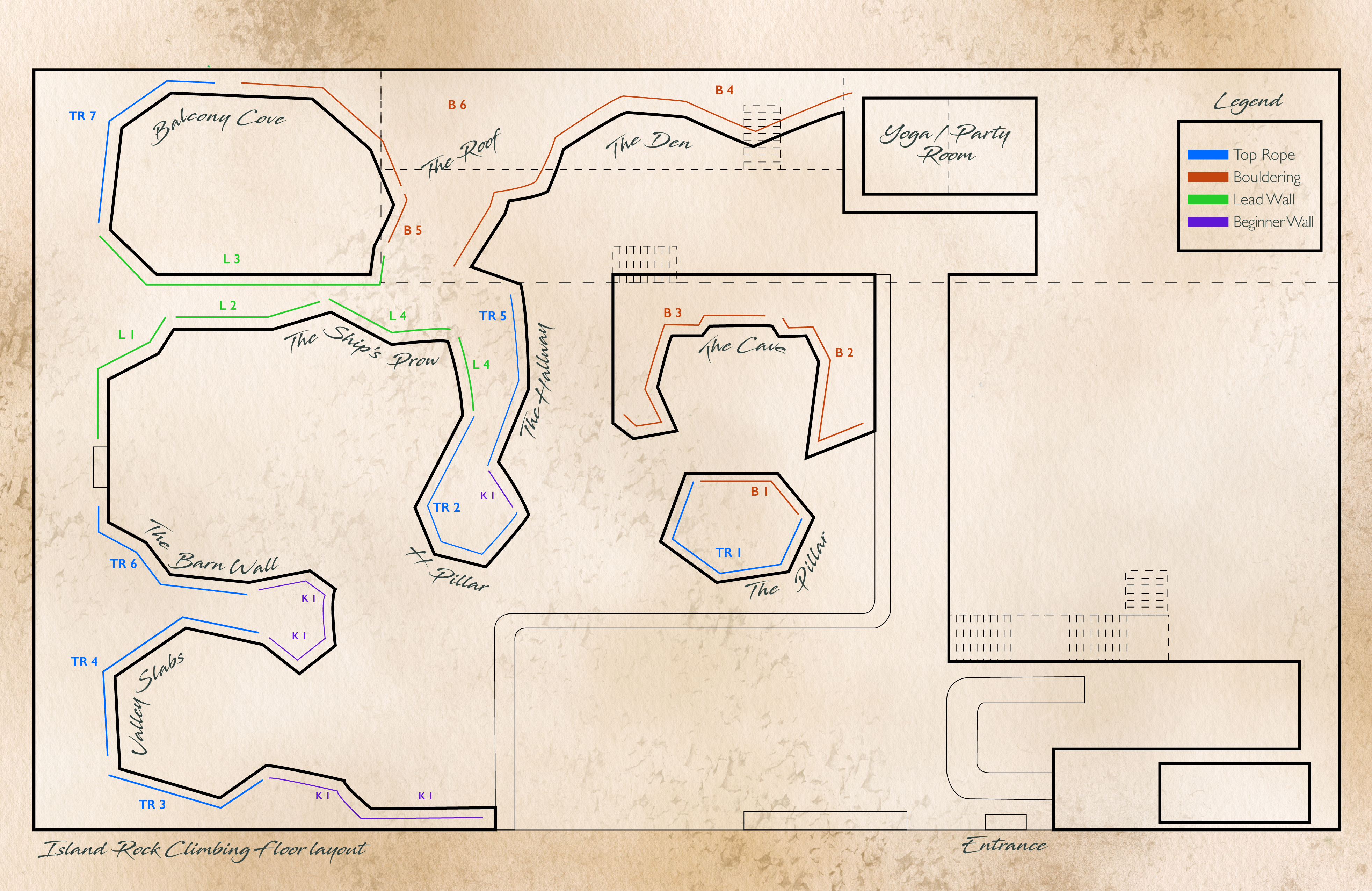At Island Rock, our expert group of full time USAC certified route setters understand that a great climb begins with a well-designed, purpose-targeted route. They are avid climbers themselves who draw from their own experiences to map out demanding sequences that are unique, exciting, and accessible to a wide audience with varying needs. Climbers of all skill levels can benefit from the more than 200 routes and boulder problems we have at Island Rock!
Island Rock uses a monochromatic style of routesetting - the color of the holds signifies a specific route up the wall. Each route that is set is a certain color so climbers know which hand and foot holds they can use to ascend that route. Every route at Island Rock is graded based upon its difficulty.

Section Guide: TR = Top Rope Wall; B = Boulder; L = Lead; K = Beginner’s Walls
| Week | Section(s) |
|---|---|
| Week 1 | TR1, B1 |
| Week 2 | TR2, L1 |
| Week 3 | TR3, B2 |
| Week 4 | TR4, L2 |
| Week 5 | TR5, B3 |
| Week 6 | TR6, L3 |
| Week 7 | TR7, B4 |
| Week 8 | B5, L4 |
| Week 9 | K1, Maintenance |
| Repeat! |
*Please note that the route schedule is subject to change without notice.